Τhe coastal city of Brighton, which is located on the sunny south coast of the United Kingdom, is one of the most exciting and culturally rich cities in the entirety of the country and offers visitors a totally different side to England that simply cannot be found in places like London.
The city of Brighton is one of the brightest, most colourful, and vibrant places to visit in the UK, and there is no shortage of fun and quirky bars, shops, and places to eat; it also has a fantastic stretch of pebbled beaches, which are lined with colourful beach huts that are incredibly photogenic.
Brighton also offers visitors the exciting pier, which is full of fun and entertaining amusements, such as the rides, the arcade games, and the abundance of sweet treats like candy floss, hot doughnuts, and popcorn.
However, aside from all the fun and excitement that Brighton can offer visitors, as soon as you venture outside the city centre, there is a plethora of historic castles just waiting to be uncovered. This list will highlight the absolute best castles near to Brighton, their key points of interest, as well as practical information, such as location, and opening and closing times.
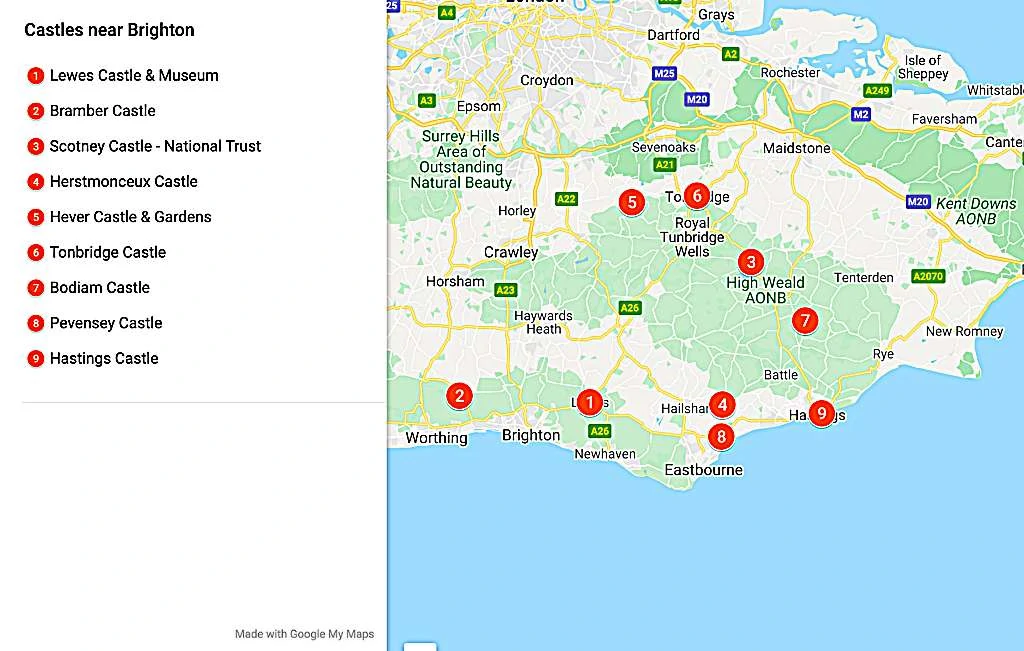
Where to Stay in Brighton If you want to visit the best castles in South England, Brighton is the best place to base yourself. You can book a rental car, or take the train, to see the impressive castles near Brighton. The Charm Brighton Boutique Hotel & Spa: Located within walking distance of the beach and the Brighton Pier, the boutique hotel offers elegant and luxurious rooms, some having a seating area and sea views. After visiting the castles, you can relax at the spa or enjoy dinner in one of the close-by restaurants. Book your stay here. The Grand Brighton: The beachfront hotel in Renaissance style offers comfortable rooms and is within walking distance from Brighton Pier. You can enjoy the views of the seafront while sipping a cocktail or having a cup of tea. The Grand Brighton has a restaurant, and breakfast is served in buffet form. Book your stay here. Cavalaire Guest House: The guest house is situated in a Victorian townhouse within a 15-minute walk from the landmarks of Brighton. It has comfortable and stylish rooms. You can enjoy breakfast at the guest house and have a meal at one of the restaurants nearby. Book your stay here. How to Get Around Brighton The best and easiest way to explore the castles near Brighton is by car. I recommend booking a car through Discover Cars. They have the best price, you can compare all rental car agencies’ prices, and you can modify or cancel your booking for free. Click here for more information on the latest prices and availability. Alternatively, you can take the train to visit some of the castles close to Brighton. Click here for more information about train tickets.
The 9 Best Castles Near Brighton You Should Visit
1. Lewes Castle
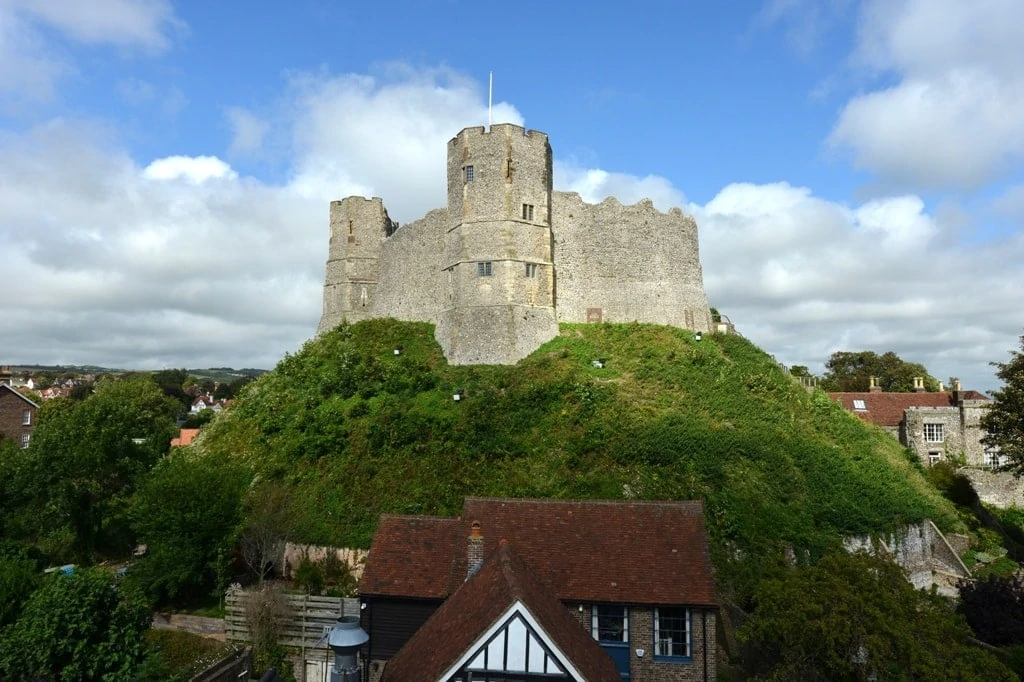
The stunning, and historic Lewes Castle is located in the beautiful town of Lewes, which is in East Sussex, and just a stone’s throw away from Brighton, and has a rich and fascinating past that attracts a plethora of tourists annually.
Lewes Castle began life as two motte and bailey castles, where the first of which was called Brack Mount, which was originally completed not long after the Norman conquest of England, in the year 1066; later, the second motte, which was known as the Keep, was completed towards the end of the 11th century.
These mottes were originally built by William de Warenne, who was the 1st Earl of Surrey, and it played a critical military role in several notable battles and conflicts over the century, including the Battle of Lewes in the year 1264. Today, the castle is open to the public, and it makes for a perfect day trip location when based in Brighton.
Where: Lewes, East Sussex, England
When: 11th century
Style: Medieval
Open for visit: Yes. Check here for more information.
2. Bramber Castle

Located in the picturesque West Sussex village of Bramber, and overlooking the beautiful River Adur, lies the Norman motte and bailey castle, Bramber Castle.
The castle was initially constructed in approximately the year 1070, by William de Braose, who was the 1st Lord of Bramber, and it was built alongside a Norman church upon a mound; fascinatingly, the ruins that exist today, predominately date back to this time period.
There is very little known about the history of Bramber Castle, but it is known that the castle was kept under the ownership of the de Braose family until the year 1326 when there was no male heir left to take over.
Today, there is very little left of the castle, but it is nonetheless a popular place to visit; the surrounding area is also very pretty and makes for a lovely place to take an afternoon walk, and escape the hustle and bustle of Brighton city centre.
Where: Bramber, West Sussex, England
When: 11th century
Style: Medieval
Open for visit: Yes. Open dawn-dusk. Check here for more information.
3. Scotney Castle
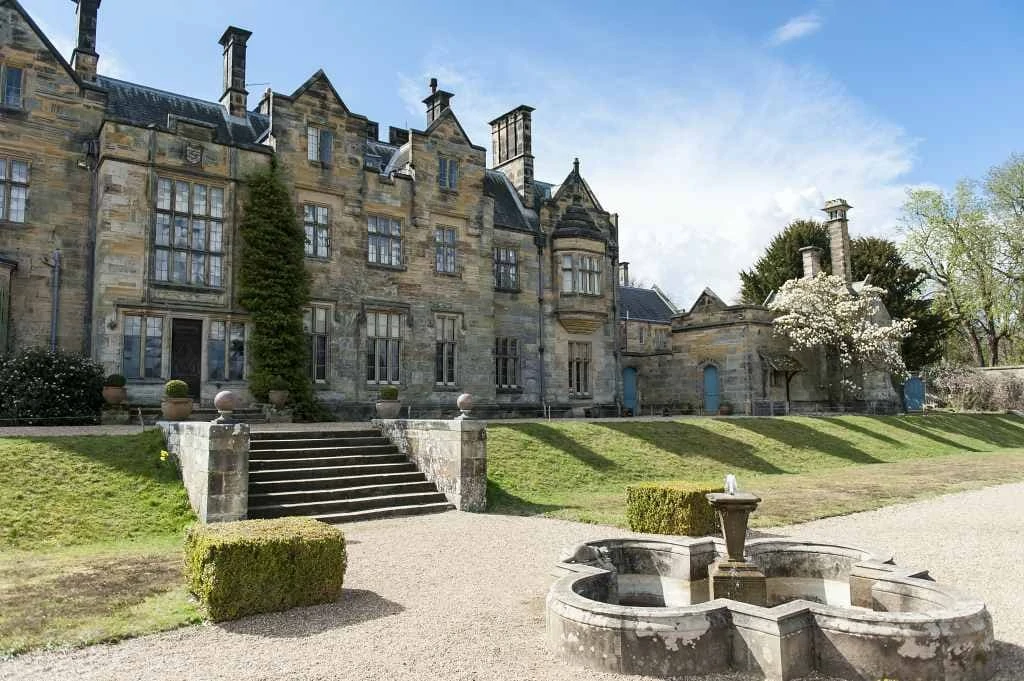
Situated in the valley of the River Bewl in Kent, England, lies the stunning and magical Scotney Castle. The earliest record of this castle dates back to the year 1137, where Lambert de Scoteni is listed as being the owner.
The first stone castle was built by Roger Ashburnham, between the years 1378 and 1380, and it began life as a rectangular fortified house, with several large towers.
Later, in the year 1580, part of the castle was rebuilt in the Elizabethan architectural style, which was heavily popular at the time. Later, in the year 1630, the eastern part of the castle was also rebuilt, but into a three-story Inigo Jones architectural style.
Today, the castle is open to the public, and since the year 1970, it has been part of the National Trust foundation; it has also been the set of several Shakespeare productions, including A Midsummer Night’s Dream.
Where: Lamberhurst, Kent, England
When: 14th century
Style: A range of different architectural styles
Open for visit: Yes, check here for more information.
You might also like: The best castles to visit in Kent.
4. Herstmonceux Castle
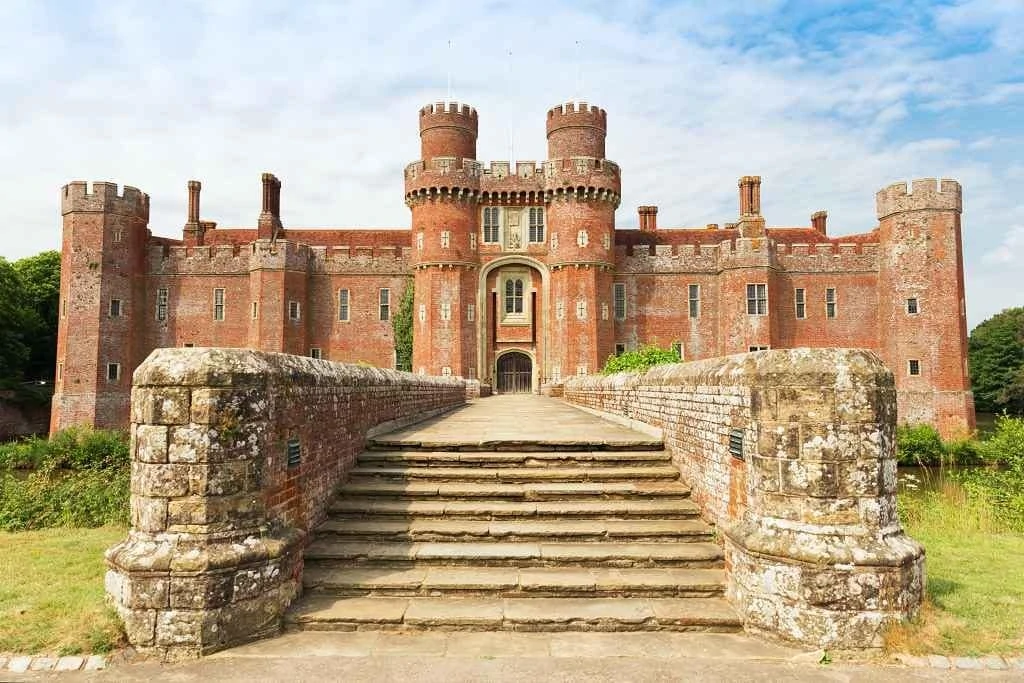
Famous for being one of the oldest and largest historic brick buildings left standing in England, Herstmonceux Castle is located near to the town of Herstmonceux, in East Sussex, which is not too far from Brighton.
The castle dates back to the year 1441, where it was constructed by Sir Roger Fiennes, who was at this time the owner of the castle, and construction was then overtaken by his son after his death, Lord Dacre.
The castle has a rich and fascinating past, but also an equally interesting modern history; it has been used as a film set for several famous movies, such as a 1990 BBC adaptation of C.S. Lewis’s ‘The Chronicles of Narnia’, as well as ‘The Silver Chair’.
Many visitors are drawn to the castle’s history, as well as its stunning architecture; it is today a Grade II listed building on the Register of Historic Parks and Gardens.
Where: Herstmonceux, East Sussex, England
When: 1441
Style: Renaissance
Open for visit: Yes, check here for more information.
Check out more beautiful castles to visit in England.
5. Hever Castle & Gardens
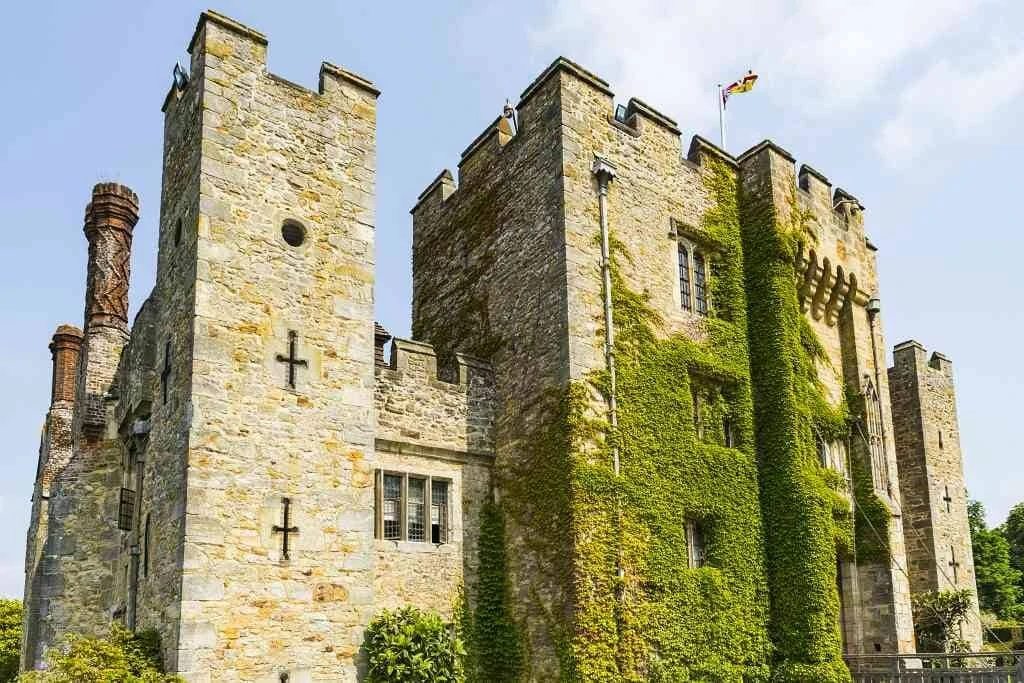
Situated in the scenic Kent village of Hever, which is near to Edenbridge, lies the beautiful Hever Castle, and the surrounding gardens. The castle originally dates back to the 13th century, though it was later converted into a stone manor in the year 1462, by Geoffrey Boleyn.
At this point, contemporary Tudor features were added, and many parts of the original castle were either renovated or rebuilt.
The grandson of Geoffrey, Thomas Boleyn, was the father of the famous Anne Boleyn, who grew up at Hever Castle, and lived there until 1513 when she moved to the Netherlands.
After the death of Thomas Boleyn, Henry VIII became the owner of the castle, and it was later granted to Anne of Cleves. For its associations with Henry VIII and Anne Boleyn, Hever Castle and the Gardens are incredibly popular with tourists, who are keen to uncover the secrets of the past.
Where: Hever, Kent, England
When: 13th-century origins
Style: Tudor
Open for visit: Yes. For more information, click here.
6. Tonbridge Castle

Located in the town of Tonbridge in Kent, lies the beautiful and historic Tonbridge Castle; the history of the castle dates back to the time of the Norman Conquest, where Richard Fitz Gilbert was given land to guard the River Medway; at this time, a motte and bailey castle was built on the site.
Later, in the 13th century, the castle was modernised, and rebuilt in stone; two-towered gatehouses were also added and were built y Richard de Clare, who was the third Earl of Hertford.
However, between the year 1521, and the late 18th century, the castle was not inhabited, and was slowly left to decay.
Today, the structures that remain are both Grade I listed buildings, and the castle is incredibly popular with visitors, as it is not too far a trip from both Brighton and London.
Where: Tonbridge, Kent, England
When: 13th century
Style: Medieval
Open for visit: Yes. Click here for more information.
7. Bodiam Castle
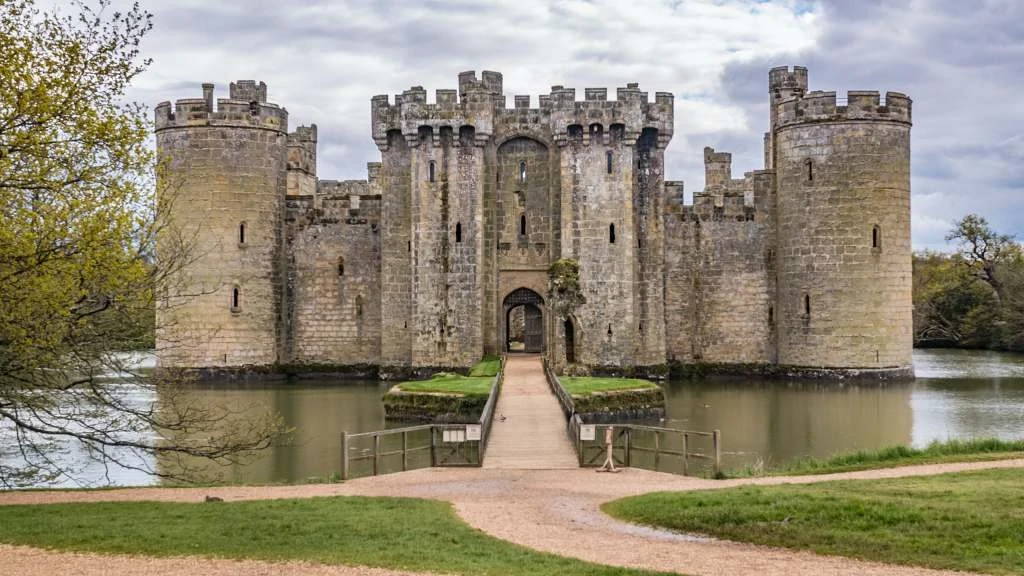
Located near to the East Sussex town of Robertsbridge lies the incredibly picturesque Bodiam Castle. It was originally constructed in the year 1385 by Sir Edward Dalyngrigge, who was a former knight of King Edward III; its initial function was to protect the local area against the French, during the Hundred Years’ War.
The castle has a truly rich and fascinating heritage, having switched hands of ownership several times, and having its associations with the monarchy.
However, today, many people are attracted to the stunning appearance of the castle, as it is built upon an artificial lake, which gives it a truly magical and enchanting atmosphere.
Although this castle is fascinating to come and visit during the day, it is perhaps even more incredible during the hours of sunset, where the silhouette looks truly breath-taking against the pink and orange hues of the sky.
Where: Robertsbridge, East Sussex, England
When: 1385
Style: Medieval
Open for visit: Yes, check here for more information.
8. Pevensey Castle
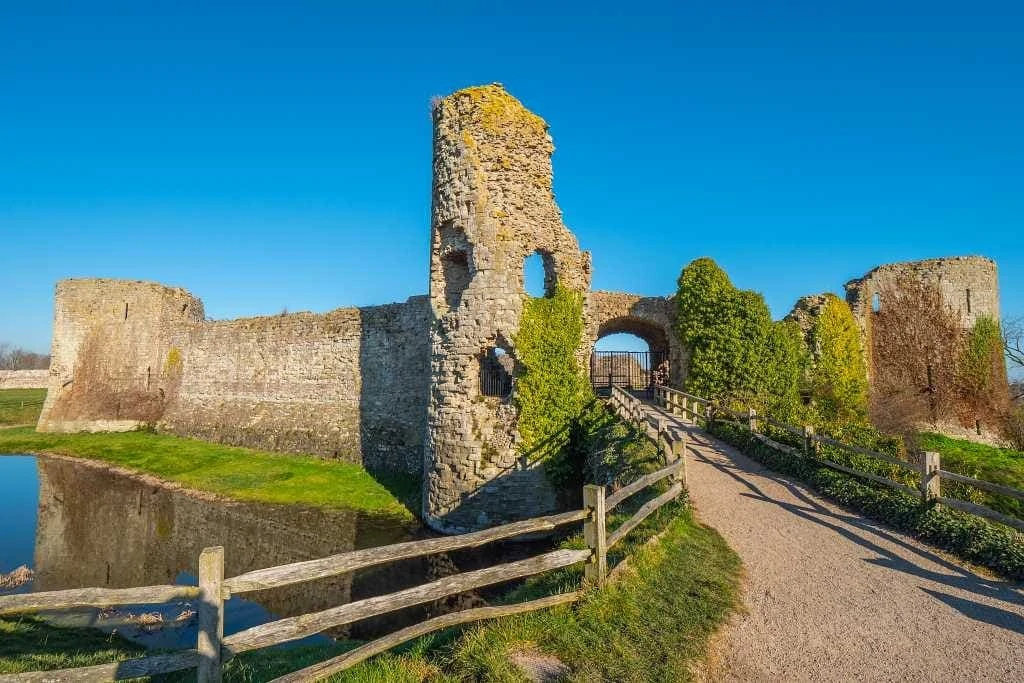
Located in the town of Pevensey in East Sussex, lies the fascinating and impressive Pevensey Castle; the castle has an extensive history, dating back to the Roman era, where a large fort was constructed in approximately 290AD.
Though it is unclear exactly as to why this Roman fort was constructed in the first place, it is believed to either has been a Roman defensive system to guard the British and Gallic coasts from Saxon pirates, or, that it was built by a usurper in an attempt to prevent Rome from controlling Britain, though this would have proved to have been unsuccessful.
The castle was later reoccupied by the Normans in 1066, and a stone fortification was built in the middle of the Roman walls. Today, the castle is open to the public, and many people are attracted to the various layers of history that are present at the site; it is also built on some amazing grounds, that make for the perfect location for an afternoon walk.
Where: Pevensey, East Sussex, England
When: 290AD origins
Style: Norman
Open for visit: Yes, check here for more information.
9. Hastings Castle
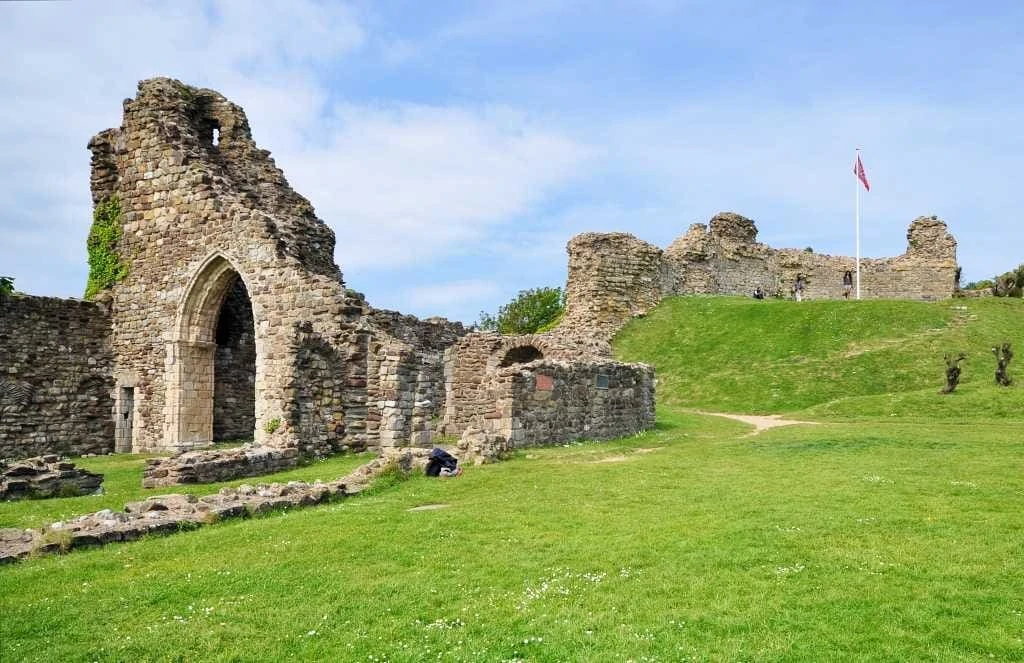
Located in the town of Hastings in East Sussex, which is not far from the hustle and bustle of Brighton, lies the beautiful Hastings Castle, which is rich in history and charm.
The castle was built before the Battle of Hastings in 1066, upon the decree of William of Normandy after arriving in England, the castle was initially built as a motte and bailey castle on the edge of the sea upon a hill, nearby to where the famous Battle of Hastings was held.
After the battle, and in the year 1070, the castle was rebuilt in stone, alongside St Mary’s Chapel, upon the orders of William of Normandy. After this time, the castle switched hands several times and was also rebuilt on several occasions.
In more recent history, during the Second World War, the castle was heavily damaged, as the town of Hastings was a key target for bombing; after the war, in the year 1951, the castle was purchased by the Hastings Corporation, and it was renovated into a tourist attraction and is now open annually between the months of March and October.
Where: Hastings, East Sussex, England
When: 11th century
Style: Medieval
Open for visit: Yes, check here for more information.
